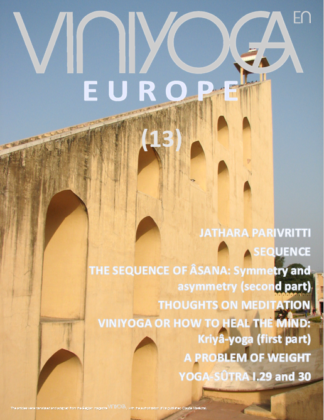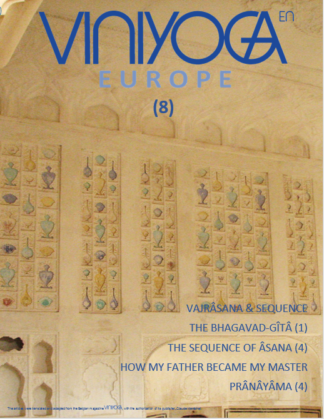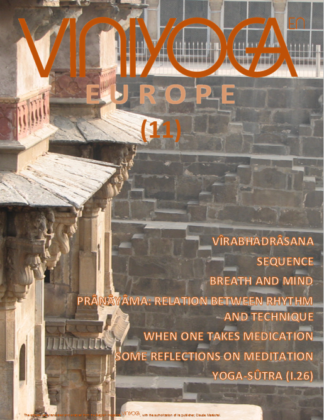Description
(33 pages)
PÂRSHVA-UTTÂNÂSANA
Sometimes yoga postures are complex asymmetrical positions.
Today we present you with pârshva-uttânâsana. It is a typical example of those postures; it contains forward bending of the trunk and several different asymmetries.
It offers a great variety of effects and indications. Its effects on the legs, hips and trunk favor standing and sitting correctly.
By Bernard Bouanchaud
SEQUENCE
This sequence is based on a progressive application of pârshva uttânâsana. The practitioner may gradually gain some domain over this pose, using the instructions that are suggested in the table of vinyâsa krama.
By Claude Maréchal
RESPECT THE YELLOW LIGHT
The mind can direct the body. However if the mind has blockages, the result can be a disaster.
By T.K.V. Desikachar
ABOUT THE CAKRA
Probably no aspect of yoga is as misunderstood as the cakra. A quick look at the innumerous books about this subject reveals a great increase in its popularity.
Those who think that at the beginning the system of the cakra probably meant something other than this cocktail of Hindu symbolism, cheap psychology and esoteric fairy tales, will see their assumption being confirmed by the following explanation.
Dalmann and Martin Soder are doctors and they are in charge of the German magazine “Viveka”. They asked Desikachar about the concept of cakra in yoga. They gathered his answers and wrote this article.
By T.K.V. Desikachar
SÂDHANA
OR HOW TO ORIENT CHANGE TOWARD MORE CLARITY
In this article, the author presents us with the idea of sâdhana according to fundamental texts: Patanjali’s Yoga-Sûtra and the Bhagavad-Gîtâ by Vyâsa.
By François Laurin
YOGA-SÛTRA I.24 and 25
Patanjali starts a very important section of Yoga with the notion of Îshvara. The aphorisms we are going to study here show the value of the “characteristics” that Patanjali assigned to the Lord and describe His incomparable power.
Comments by Professor T. Krishnamacharya; Presentation and Explanations by T.K.V. Desikachar





